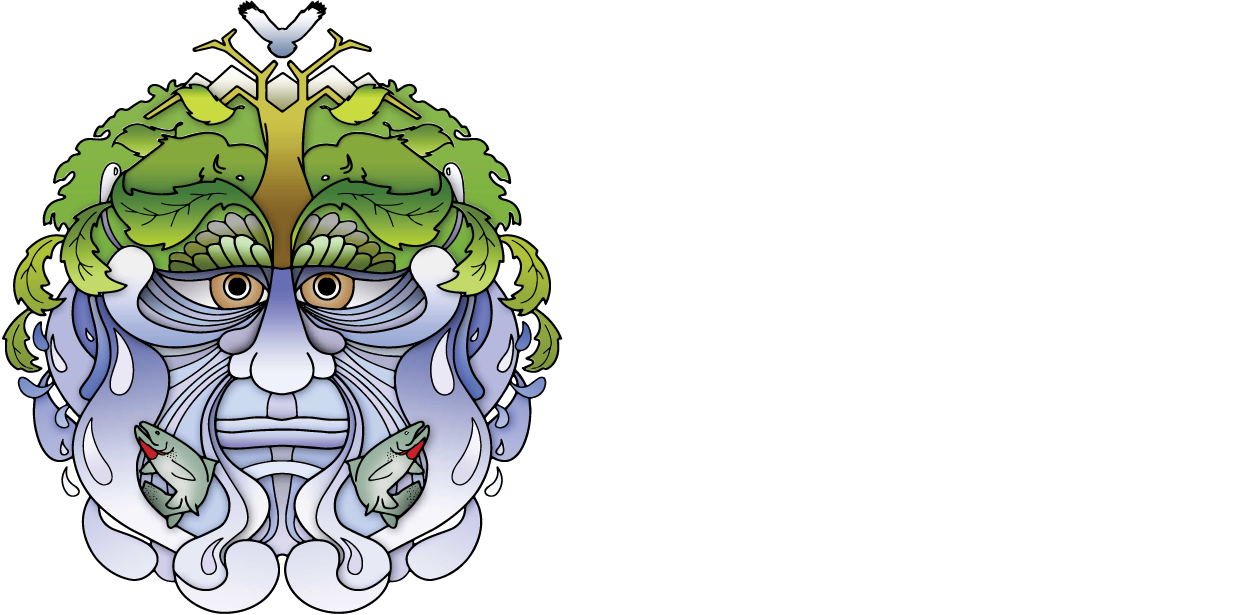By Nata de Leeuw, OWC Outreach Assistant
There are aliens among us!
These days, there has been a lot of talk about aquatic invasive species and the critical importance of keeping them out of our waters. But did you know that terrestrial invasive plants have the potential to be equally devastating to our water security in Alberta?
Weeds outcompete native plants - contributing to erosion, destroying rivers, killing fish, and costing all of us money!
Any plant found growing in an area where it is not native is considered an invasive species or “weed.” This includes relatively benign invaders such as dandelions, seen in lawns everywhere, to more vicious colonizers such as knapweed, which outcompetes native plants, poisons the soil, and provides little nutritional value to wildlife.
Spotted knapweed can take over large areas of rangeland, replacing higher quality forage, and even produces biochemical compounds that prevent other plants from growing. [Photo: Leta Pezderic]
Here are some of the problems:
1. LIVESTOCK SUFFERS
Without the natural constraints of their original habitats, invasive plants can overwhelm local ecosystems. They adapt to new environments, grow aggressively, and reproduce very quickly. Some invasive plants (like spotted knapweed) even produce biochemical compounds that kill off native plants around them and/or make them unpalatable to herbivores such as cattle. By out-competing their native counterparts, these invasives can grow into a monoculture - an area of land with only one species present.
The presence of a monoculture drastically reduces the quality of forage available to livestock and wildlife, and spells bad news for specialist herbivores - insects and animals that depend on a particular native plant for food. Some weeds, such as tall buttercup, oxeye daisy, and thistle, are avoided by cattle altogether due to their bad taste. Oxeye daisy also acts as a host reservoir for crop pests, like gall-forming nematodes - yet another way invasive weeds threaten our agricultural industry.
2. WE ARE LEFT WITH "FAKE" FISH
Invasive species can invade riparian areas - the places where land and water meet. Plants in these areas are especially important as they provide stability for the river bank, shelter from predators, and the cooling shade necessary for the survival of many fish species. Native fish such as the westslope cutthroat trout need clean, cool, clear water for survival - which is exactly what humans, wildlife, and livestock need to drink.
Westslope cutthroat trout are considered an indicator species, and are particularly susceptible to changes in their habitat. So they TELL us - just by being there - if the water quality is good. They are currently limited to five percent of their original native range. This is not a good sign for the quality of our water!
As cutthroat trout populations decrease, non-native fish such as rainbow trout move in. Not only that, but when their native fish disappear, some water bodies are stocked with non-native fish to continue to provide recreational opportunities.
3. IT COSTS LOADS OF MONEY
Although it isn’t easy, it is much cheaper to prevent invasive weeds from spreading than to try to control weeds once they’ve taken over. For example, it costs Cardston County $120,000-$130,000 per year to control spotted knapweed just in the river valleys (and that doesn’t include weed control along ditches or other areas). That’s a lot of money!
When invasive plants take over, only one root system exists in the soil. This can lead to decreased soil stability, increased erosion, and increased sediment flow into the rivers. Not only is the cost of weed control in itself a problem, the increased sediment in the rivers causes our water treatment plant to work overtime. This is a major problem, and the cost of cleaning our water is transferred directly to taxpayers. So if you want to save money, you can help by understanding what weeds are - and by pulling them!
Invasive weeds can disrupt the stability of riparian areas, where land meets water, affecting aquatic as well as terrestrial species (including humans!). Photo: Hidden Creek.
COMBATING ALIENS - ONE WEED AT A TIME
OWC is partnering with the Southern Alberta Land Trust Society (SALTS) to help tackle weeds on conservation easements. SALTS is a grassroots not-for-profit that works collaboratively with landowners to protect private land of high ecological value through the negotiation of conservation easements.
Every Thursday for the remainder of the summer, the OWC Outreach Assistants will be joining SALTS employees, ranchers, and volunteers to attack invasive species throughout the headwaters.
Wanna be a weed-buster?
If you'd like to join us one Thursday to help combat weeds, email Mike Gibeau, SALTS Stewardship Coordinator (mgibeau@salts-landtrust.org).
To get involved with other projects with the OWC, please have a look at our volunteer page.
Click here for photos from our 2017 partnership with SALTS!
OWC is teaming up with SALTS to remove invasive weeds from conservation easements. Photo: OWC team with local landowner Sophie La Rocque.
Learn more:
To learn more about the above issues, additional problems with invasive species, how they spread, and how they’re controlled:
- Alberta Invasive Species Council
- Check out this book put out by the Crown of the Continent Research Learning Centre.
- Riparian Area Management (Agriculture and Agri-Food Canada
- Invasive Plants in Alberta: Riparian Areas (Alberta Agriculture & Forestry)
- What Makes Invasive Plants Successful
- Costs and Threats of Invasive Species to Alberta's Natural Resources


![Spotted knapweed can take over large areas of rangeland, replacing higher quality forage, and even produces biochemical compounds that prevent other plants from growing. [Photo: Leta Pezderic]](https://images.squarespace-cdn.com/content/v1/55775efbe4b02c5614691727/1498500230566-QJOY2Z4PW0IO6V22FBYV/spotted+knapweed.jpg)





